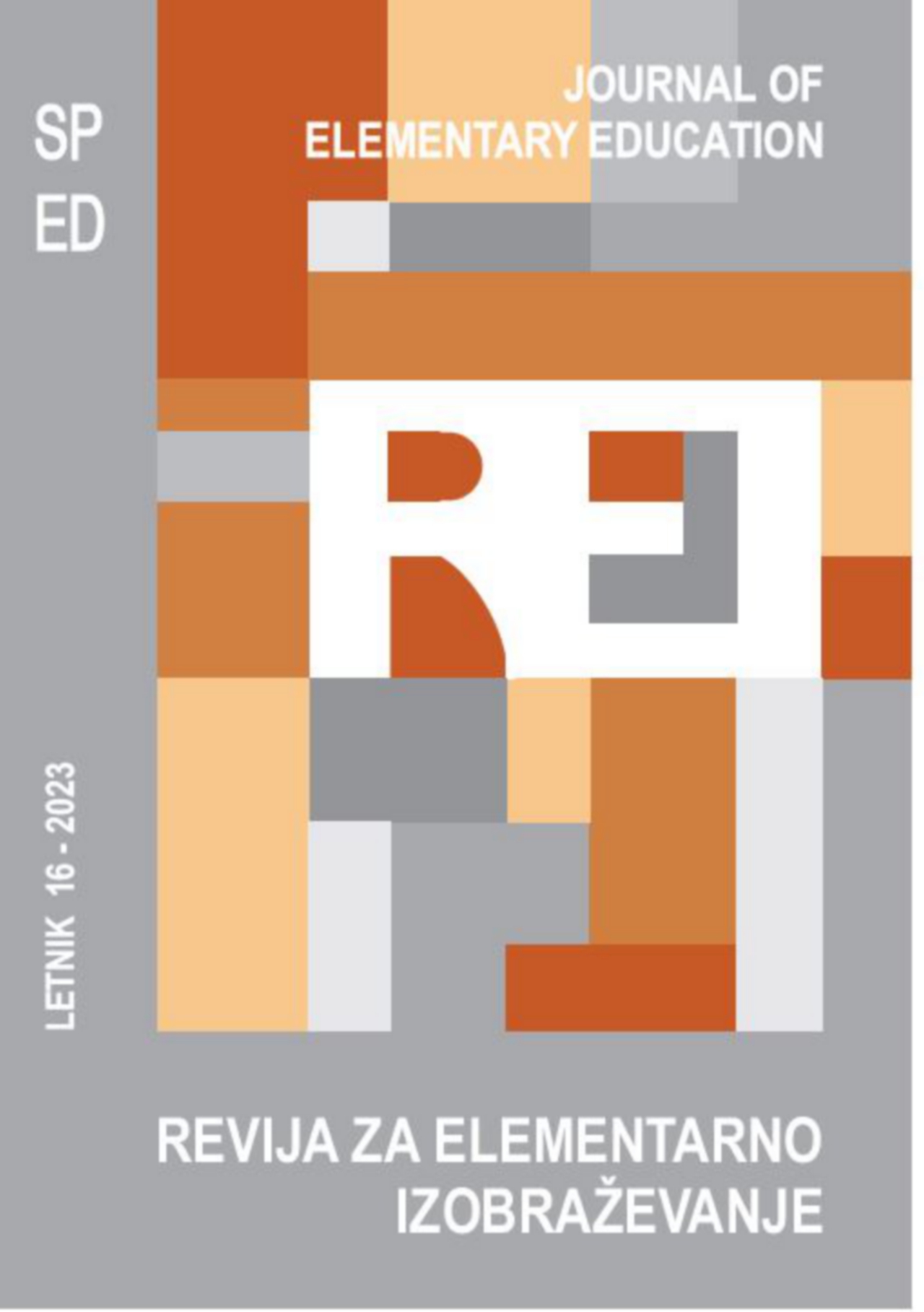Learning about Schools in the British Isles Through a Video Corpus: Reflections on an Online Project for Digital Literacy and Multimodal Corpus Construction
DOI:
https://doi.org/10.18690/rei.16.Spec.Iss.2988Keywords:
Multimodality, corpus construction and annotation, digital literacy, English linguistics, video genres.Abstract
Through first-hand experiences undertaken with students using the OpenMWS platform (Taibi 2020), the paper reports on the progress made by second-year language degree students in English linguistics at the University of Messina as regards their use of online corpus construction, annotation and search tools when exploring video genres. The paper describes the ways in which participation in the Messina OVP (Online Video Project) on schools in the British Isles during and after the Covid crisis has proved beneficial for the students in question, both in terms of acquiring textual competences and as regards creating new interactive communities (Vasta and Baldry 2020; Baldry et al 2022).
Downloads
References
Ackerley, K. and F. Coccetta (2007). Enriching Language Learning through a Multimedia Corpus. ReCALL 19(3): 351–370.
Baldry, A. and D. Kantz (2022). Corpus-assisted Approaches to Online Multimodal Discourse Analysis of Videos. In Analyzing Multimodality in Specialized Discourse Settings. Innovative Research Methods and Applications, ed. by V. Bonsignori, B. Crawford Camiciottoli and D. Filmer, 1–22. Vernon Press: Wilmington.
Baldry, A. and P. Thibault (2006). Multimodal Transcription and Text Analysis. A Multimedia Toolkit with Associated On-line Course. London and Oakville: Equinox.
Baldry, A. and P. Thibault (2020). A Model for Multimodal Corpus Construction of Video Genres: Phasal Analysis and Resource Integration Using OpenMWS. In Multiliteracy Advances and Multimodal Challenges in ELT Environments, ed. by N. Vasta, and A. Baldry, 159–173. Udine: Forum Editrice.
Baldry, A., Coccetta F., and D. Kantz (2022). What if? Healthcare Simulations, Online Searchable Video Corpora and Formulating Hypotheses. In Analysing Health Discourse in Digital Environments, ed. by A. F. Plastina, 126-146. Newcastle upon Tyne: Cambridge Scholars.
Baldry, A., D. Kantz, A. Loiacono, I. Marenzi, D. Taibi and Francesca Tursi (2020). "THE MWSWEB PROJECT: Accessing medical discourse in video-hosting websites." Lingue e Linguaggi, 40, 433–472.
Bernardini, S. (2003). Designing a corpus for translation and language teaching: The CEXI experience. TESOL Quarterly, 37(3), 528–537.
Böhme, G. (2012). Invasive technification. Critical essays in the philosophy of technology. London: Bloomsbury.
Boulton, A., & Cobb, T. (2017). Corpus use in language learning: A meta-analysis. Language Learning, 67(2), 348–393. doi:10.1111/lang.12224
Breyer, Y. (2009). Learning and teaching with corpora: Reflections by student teachers. Computer Assisted Language Learning, 22(2), 153–172. doi:10.1080/09588220902778328
Cambria, M., C. Arizzi, and F. Coccetta (eds.) (2012). Web Genres and Web Tools. Como: Ibis.
De Wilde, V., M. Brysbaert and J. Eyckmans (2019). Learning English through out-of-school exposure. Which levels of language proficiency are attained and which types of input are important? Bilingualism: Language and Cognition, 1–15. doi: 10.1017/S1366728918001062.
Flowerdew, L. (2015). Data-driven learning and language learning theories. In Multiple affordance of language corpora for data driven learning ed. by. A. Leńko-Szymańska and A. Boulton, 15–36. Amsterdam: John Benjamins.
Frankenberg-Garcia, A. (2012). Raising teachers’ awareness of corpora. Language Teaching, 45(4), 475–489. doi:10.1017/S0261444810000480
Frankenberg-Garcia, A., L. Flowerdew and G. Aston (eds) (2011). New Trends in Corpora and Language Learning. London: Bloomsbury.
Granger, S. (2015). The contribution of learner corpora to reference and instructional materials design. In The Cambridge handbook of learner corpus research, ed. by S. Granger, G. Gilquin and F. Meunier, 486–510. Cambridge: Cambridge University Press.
Halliday, M.A.K. and R. Hasan (1976). Cohesion in English. London: Arnold.
Jablonkai, R. and E. Csomay (eds.) (2022). The Routledge Handbook of Corpora in English Language Teaching and Learning. London: Routledge.
Johns, T. (1991). Should you be persuaded: Two samples of data-driven learning materials. English Language Research Journal, 4, 1–16.
Liu, D. and P. Jiang (2009). Using a corpus-based lexicogrammatical approach to grammar instruction in EFL and ESL contexts. The Modern Language Journal, 93(1), 61–78. doi:10.1111/j.1540-4781.2009.00828.x
Maribel Montero Perez, M. and Michael P.H. Rodgers, (2019). Video and language learning. The Language Learning Journal, 47(4), 403–406. doi: 10.1080/09571736.2019.1629099
McEnery, T. and A. Wilson (1997). Taching and language corpora. ReCALL, 9(1), 5–14. doi: 10.1017/S0958344000004572
Nation, I.S.P. (2001). Learning vocabulary in another language. Cambridge: Cambridge University Press.
Perego, E. and C. Taylor (eds.) (2022). The Routledge Handbook of Audio Description. London and New York: Routledge.
Poole R. (2022). “Corpus can be tricky”: revisiting teacher attitudes towards corpus-aided language learning and teaching. Computer Assisted Language Learning, 35(7), 1620–1641. doi: 10.1080/09588221.2020.1825095
Poole, R. (2018). A guide to using corpora for English language learners. Edinburgh: Edinburgh University Press.
Sindoni, M. G., E. Adami, S. Karatza, I. Marenzi, I. Moschini, and S. Petroni (2019). The Common Framework of Reference for Intercultural Digital Literacies. https://www.eumade4ll.eu/wp-content/uploads/2020/02/cfridil-framework-linked-fin1.pdf
Taibi, D. (2020). Analysis D: Shaping Digital Identities through Group Study: A Simulated Case Study Using Online Tools and Videos to Explore Animal-human Interactions. In Multiliteracy Advances and Multimodal Challenges in ELT Environments ed. by N. Vasta and A. Baldry, 190–195. Udine: Forum.
Vasta N. (1996). Università e Lingue alle Elementari. La formazione degli insegnanti elementari in un centro linguistico universitario nel quadro del Progetto DIRELEM-LISE. Udine: Campanotto.
Vasta, N. and A. Baldry (eds) (2020). Multiliteracy Advances and Multimodal Challenges in ELT Environments. Udine: Forum.
Downloads
Published
Issue
Section
License
Copyright (c) 2023 Mariavita Cambria

This work is licensed under a Creative Commons Attribution 4.0 International License.
